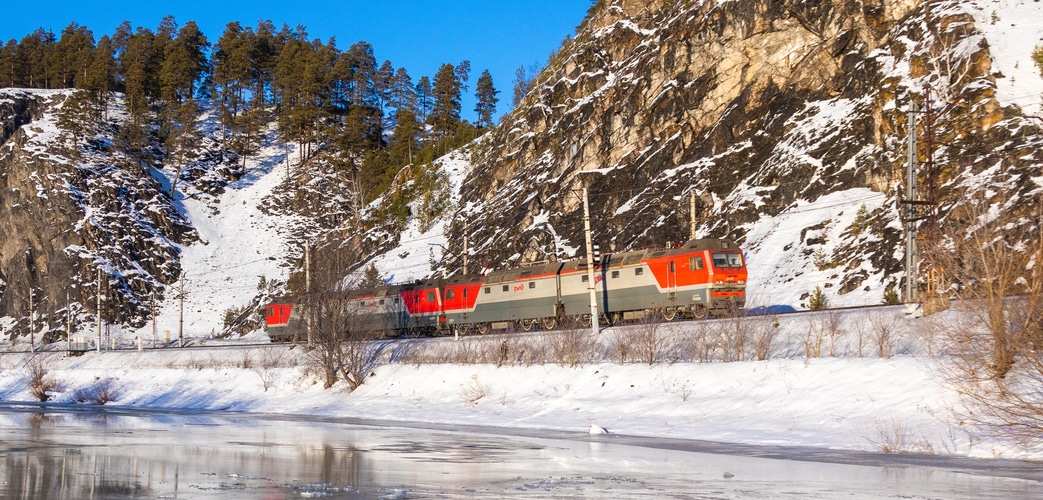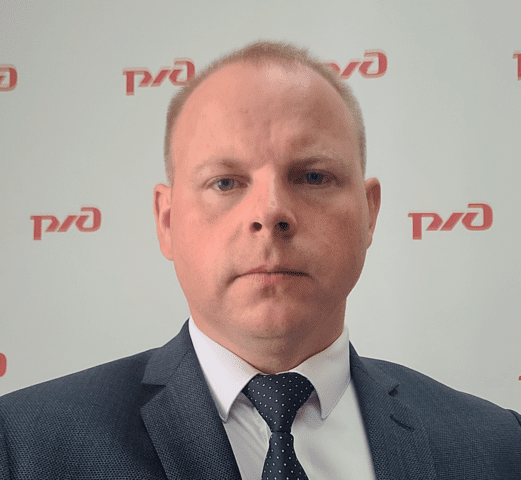Water resources
Key principles of Russian Railways’ approach to water use management:
- lower water consumption through efficient water use;
- decrease in wastewater discharge into surface water bodies and on land;
- prevention of water bodies pollution.
The Company withdraws water from surface and underground sources solely in accordance with the applicable laws (under water use agreements and extraction licences), without causing any significant environmental impact. None of the regions of the Company’s operations are classified as areas with water stress.
Targets set by Russian Railways’ Environmental Strategy are being met under the Clear Water and Environmental Safety investment programmes. To decrease the discharge of insufficiently treated wastewater, we have put in place a medium‑term target programme to bring the treatment facilities up to the regulatory standards by 2025.

Water consumption
In 2023, Russian Railways used 61.2 mcm of water, a reduction of 0.23 mcm or 0.4% y‑o‑y, including 52% for utility and drinking needs and 48% for process needs. The Company reduced its consumption after introducing water consumption control and instrumental measurement, transferring water supply facilities to municipalities, and carrying out organisational and technical initiatives designed to save water.
In circulating water supply and recycling water supply systems, water consumption in 2023 stood at 4,991,109 cu m and 111,665 cu m respectively.
To ensure sanitary and epidemiological safety for consumers, the Railway Hygiene and Epidemiology Centre performs regular drinking water quality checks at the Company’s facilities.
The Company is running a Clear Water project to upgrade railway water supply systems. The project seeks to align the quality of water supplied to consumers with standards set by the Russian sanitation and environmental laws. It is part of Russian Railways’ Programme for Improving Drinking Water Supply at Railways. The programme features the construction of new and renovation of existing water supply networks; the implementation of de‑ironing systems; the procurement and installation of both modular water treatment plants and local industrial water treatment systems.
In 2023, significant improvements were made to the water supply network of the Sennaya station of the Privolzskaya Railway, which included laying over 5.5 km of new water pipeline, constructing 45 wells, installing shut‑off valves at network connection points, and adding five new fire hydrants. Additionally, the centralised water supply at the Michurinsk‑Uralsky station was fully renovated.
Furthermore, as part of Russian Railways’ investment programme, the water supply network at the Biysk station of the West‑Siberian Railway was upgraded, with more than 3 km of worn‑out metal water pipes replaced.

As part of the Clean Water project, the Company is implementing a set of measures to enhance the quality of water supply for our employees, their families, and external users, including improvements at social infrastructure facilities.
Key initiatives include:
- upgrading railway water supply systems within the scope of the Clear Water project;
- providing bottled water to employees;
- implementing production control measures to ensure drinking water quality at facilities;
- maintaining and servicing engineering structures and devices at water supply sources.
Yuri Bolshakov Head of Division at the Environment and Technosphere Safety Department
Wastewater discharge
In 2023, the Company’s wastewater discharge totalled 147.3 mcm, including 114.6 mcm of wastewater released into the environment and 32.7 mcm discharged into centralised water disposal systems.
Key laws and regulations on wastewater discharge and treatment limits followed by the Company:
- Federal Law No. 7‑FZ On Environmental Protection dated 10 January 2002Discharge standards and limits are set forth by the Federal Supervisory Natural Resource Management Service.;
- List of pollutants subject to state regulation in the area of environmental protectionApproved by Order No. 2909-r of the Russian Government dated 20 October 2023. Section II contains a list of 265 key substances for which discharges are treated.;
- Order No. 1118 of the Russian Ministry of Natural Resources and Environment dated 29 December 2020 On Approval of the Methodology for the Development of Standards for Permissible Discharges of Pollutants into Water Bodies for Water Users.
In 2023, Russian Railways’ polluted wastewater discharges into surface water bodies and on land amounted to 3.72 mcm, a reduction of 15.7%, or 0.7 mcm, compared to 2022.
These included:
- insufficiently treated wastewater: 3.723 mcm;
- untreated wastewater: 0.001 mcm.
The decrease was the result of ongoing repairs and overhaul of treatment facilities and their transfer to municipalities.
As of the end of the reporting year, there were 457 treatment facilities at the Company’s units, including 301 local and 156 sewage treatment facilities, of which 301 (66%) are treatment facilities releasing wastewater into disposal networks, 124 (27%) – into water bodies, and 32 (7%) – on land.
In terms of their condition, 67% (306 units) of all treatment facilities are in satisfactory condition, 16% (72 units) require overhaul or upgrade, and the remaining 17% (79 units) are mothballed or inoperable.
As part of its investment programmes, Russian Railways completed the construction and upgrade of four wastewater treatment facilities at the Khvoinaya, Kurbakinskaya, Penza‑1, and Ershov railways stations.
The Company set the following water management targets for 2024 as compared to the 2023 performance:
- reducing water use by 0.5%;
- cutting polluted wastewater discharges into surface water and on land by 3.9%.
To that end, there are environmental protection measures slated for 2024, including renovation and construction of treatment facilities, introduction of environmental protection equipment and flushing of water pipelines. Once implemented, they will enable the Company to reduce polluted wastewater discharges into water bodies and on land by 148,000 cu m.